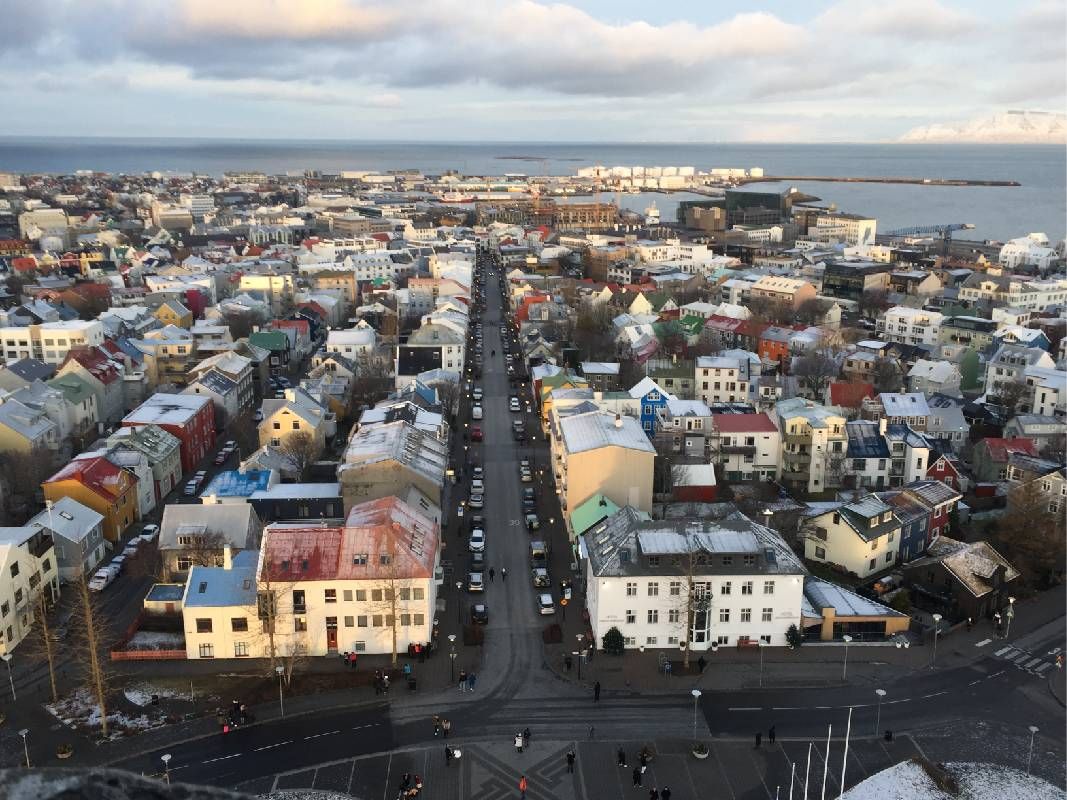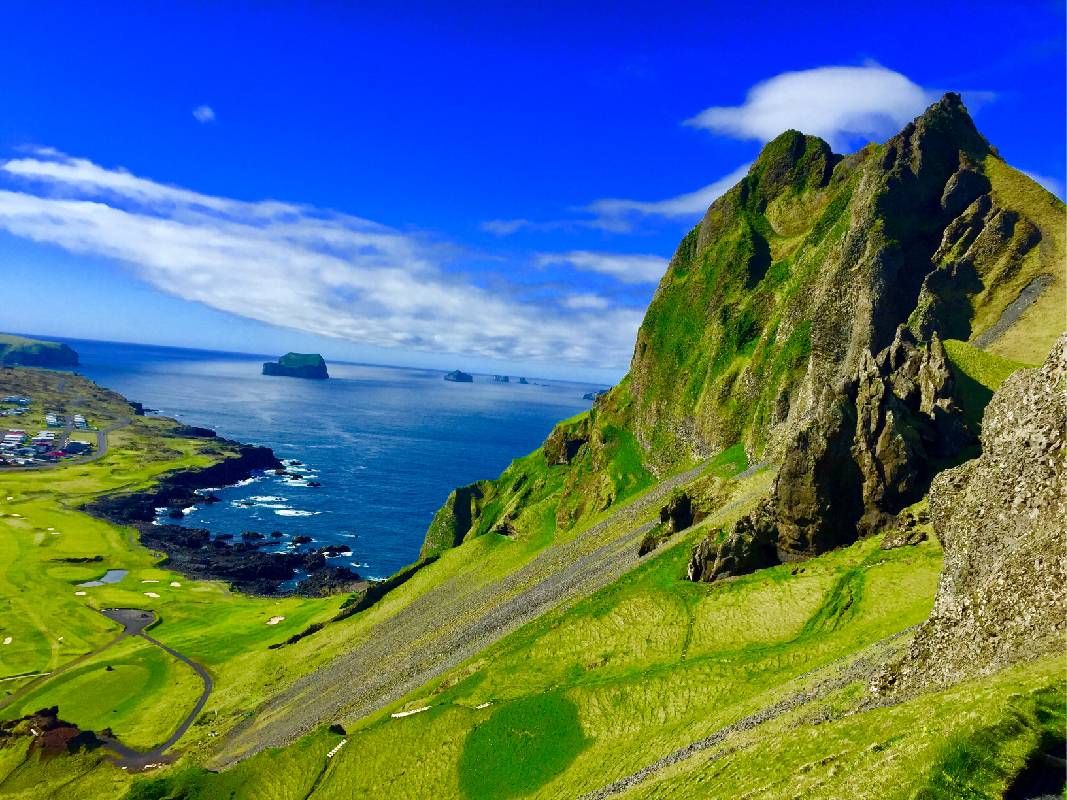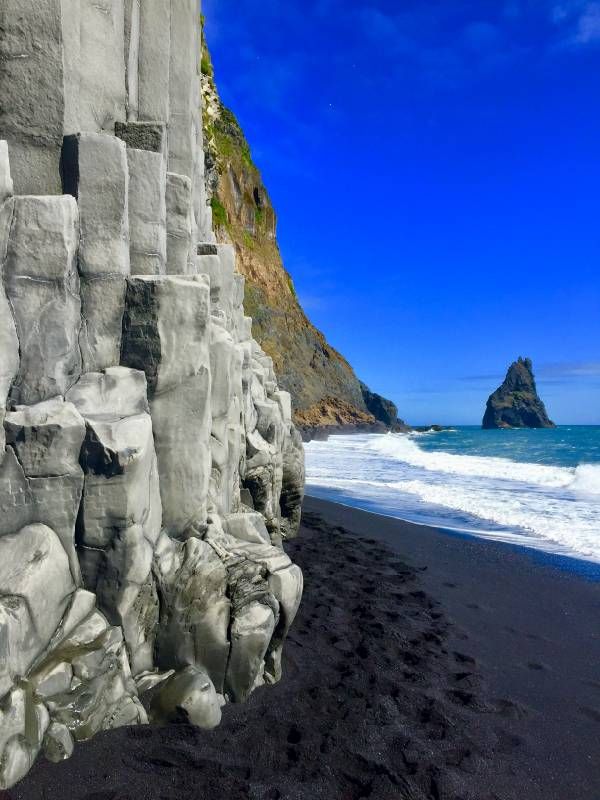Iceland for Introverts
Traveling alone gives a puffin-peeper unfettered freedom to explore off-the-ring-road corners of the strangely beautiful island nation
It's my clear preference to travel alone, especially for big trips, the ones with oodles of things I want to do. I can avoid late starts because someone takes a long time getting ready or has the audacity to think vacations are for sleeping in.

My first solo trip to Iceland came in early January 2019. I didn't have to convince anyone it was a good idea to visit a place touting coldness in its name during the time of year it was covered in extended darkness. I had one goal: to see the northern lights. Darkness was integral to the plan.
Being an introvert, I chose to visit Iceland in late May, hoping to improve my chances of seeing the early birds while avoiding the crowds of people known to flock European destinations.
On the only night tour operators decided conditions were suitable, I boarded a bus and stood in a thin blanket of snow in empty fields miles from anywhere, staring at black sky. At one stop the guide casually said, "This would be the perfect place for a murder." There were no deaths, but no swirly streaks in the sky either. Goal unmet.
Strategically Timed Puffin Hunt
Nonetheless, I planned a return with a new goal: puffin pics. Images of these black-and-white sea birds with distinctive bright orange beaks and feet, had been as common as trolls and Vikings on T-shirts in the souvenir shops of Reykjavík, the capital and largest city. But puffins don't winter in Iceland. They spend eight months flying over the Atlantic before coming ashore in summer.
Being an introvert, I chose to visit Iceland in late May, hoping to improve my chances of seeing the early birds while avoiding the crowds of people known to flock European destinations.
I'd already completed the compulsory tourist agenda: the Blue Lagoon, a bus tour of The Golden Circle — Gullfoss (a waterfall), Strokkur (a geyser), Þingvellir National Park (a valley walk between tectonic plates) — and, most memorable, a glacier hike at Sólheimajökull.
I had also loaded up on culture in the capital: nine museums, including the Punk Museum, housed fittingly in what once was a below-ground men's restroom.
Seeking Solitude on an Island
The bulk of this weeklong adventure would be in places where sheep, horses and hopefully puffins outnumbered humans. At the outset, I had decided I did not want to lose time on shopping and dining.
As a vegetarian, fish and chips were not a draw and, while geothermal hothouses grow vegetables, I was content to grab crispbread, skyr and other munchies in grocery chains like Hagkaup and Bónus.

My travels involved driving counterclockwise on the Ring Road (Route 1) along the country's perimeter but, only two hours from Reykjavík, I deviated, taking a ferry to the town of Vestmannaeyjar on the island of Heimaey.
Puffin Paradise Promised
On the ship, I nabbed a pamphlet touting the destination as having "THE LARGEST PUFFIN COLONY IN THE WORLD." Score! Once docked, I headed to what Google Maps marked as Puffin Lookout on the far end of the island, a mere nine-minute drive.
I walked a path to a wooden shelter providing protection from high winds but, alas, no puffin sightings. Along a cliff, I gazed at lush green landscapes, black-sand beaches and the deep blue ocean below. I saw countless gulls and flocks of sheep, with every ewe seeming to have a black or white lamb hop-running behind.
Closer to town, I walked the rim of Eldfell, a volcano that last erupted over six months in 1973, forcing the urgent evacuation of the island's 5,300 residents. The rust-red ground contrasted with the white houses of town.
The next morning, I ascended stairs and paths to Dalfjall, which AllTrails had the nerve to call a "hill." I walked the ridge as much as I dared. A five-minute drive brought me to the base of Heimaklettur ("Home Rock"). As I climbed, fierce winds shattered the screen of my mobile phone when my jacket pocket clanged against a steel ladder.
I stopped, ostensibly to snap photos of craggy rock formations piercing the ocean's surface, but really to let a local pass. I retreated, thankful to be alone, with no one to say, "Let's not" at the outset or bemoan my, "Let's stop" when my caution button sounded.
Free to Explore
Back on Ring Road, I committed to stopping as often as I wanted. The hours of extended light eliminated any pressure of reaching a night's stay before dark. I walked along Reynisfjara, a popular black-sand beach with a cliffside formed by jagged basalt slabs.

I then backtracked to walk the clifftops of the Dyrhólaey Peninsula, another purported puffin-palooza spot. I saw a sand beach extending forever toward the west, an austere white lighthouse and a rock arch jutting into the ocean, but no orange-beaked birdies. Only three hours from Reykjavík, crowds thinned dramatically hereafter.
I drove along the south coast to two glacier lagoons, Fjallsárlón and, 15 minutes east, Jökulsárlón. Icebergs populated both. In the latter, seals popped their heads above the surface as ice floes drifted through a waterway to the North Atlantic.
Few People, Fewer Puffins
The sun did not hit quite right for optimal photos, so I backtracked thirty miles the next morning for retakes, with no one riding shotgun mumbling, "Been there, done that."
I maintained a healthy concern over gasoline. The eastern half of the country is sparsely populated, Egilsstaðir being the largest town, with 2,500 residents. I topped up the tank wherever possible. Very few signs stated the distance to towns that popped up without warning. Restrooms were even rarer, the couple I found requiring the tap of a credit card to pay the 200 krónur (about $1.50) fee.

I traveled for miles without seeing another vehicle. Occasionally, I wished I had someone to share the sights — "Can you believe this?!" — but it felt reverential letting the ever-changing landscape speak for itself. My contact with the rest of the world was limited to one radio station that broadcast extended Icelandic monologues between unknown pop songs.
Volcanoes, Active and Not
While volcanic eruptions sometimes make international headlines, there are plenty of inactive ones to explore. In the northeast, Hverfjall is a broad black volcano that begs a detour off Ring Road for a half-hour ascent yielding a panorama of nearby mountains and Lake Mývatn.
Nearby is Leirhnjúkur, considered an active volcano (though it's been 40 years since it last erupted). The rocky lava fields have easily walkable paths, allowing closer looks at the otherworldly landscape with steam continuing to escape from fissures. Viti, an explosion crater of the expansive Krafla caldera, is another quick climb, the reward being stunning views of the aquamarine-colored lake that fills it.
Waterfalls are commonplace. Any mountainside may offer narrow trickle, sometimes much more. At one point in eastern Iceland, I stopped to watch a small herd of reindeer near the shore. A 360-survey offered Iceland's greatest hits: ocean, beach, mountains and multiple waterfalls. It was so ridiculously beautiful, I laughed.
Godafoss is a must-stop in north-central Iceland, a broad waterfall interrupted in places by rocky sections which, according to legend, represent pagan statues tossed in when Iceland adopted Christianity.
Iceland's Second City
On my fourth night, I reached Akureyri (population 19,000) in north-central Iceland, the largest city outside the capital region. Come morning, I walked the city's center as a cruise ship navigated Eyjafjörður Fjord below snow-draped mountains. I snapped photographs of marine activity and oddities like knitted coverings for trash receptacles. I yearned for good coffee (which I found) but not conversation.

Instead, I strayed from Ring Road, driving an hour northeast among charming farms to Húsavík, a town renowned for whale watching opportunities. I gazed at the various whale watching vessels but opted out. Leaving town, I stopped at a sleek Nordic-styled viewing shelter I'd spotted on the way in. Puffins, I had read, made cameos in the area. Alone, I took in the vista, perfectly content even without glimpsing the elusive bird.
Throughout my visit, I couldn't shake the notion I should pack more into each day. Nature didn't offer a lights-out to signal turning in. Each night, I kept the windows unobstructed, frequently awakening as if to catch the skies gone dark. Didn't happen. On my final night before returning to Reykjavík, I drove from my cabin to the village of Hvammstangi at 12:30 a.m. to see a fjord view of what was technically sunset. Still, a degree of light lingered.
A 360-survey offered Iceland's greatest hits: ocean, beach, mountains and multiple waterfalls. It was so ridiculously beautiful, I laughed.
Trying a Puffin Tour Boat
On my last day beyond Reykjavík, my incredible trip felt slightly incomplete, still puffin-less. I opened my laptop and searched for puffin tours in the capital. Sure enough, there were one-hour sailings on an "old wooden boat," Skúlaskeið, from Old Harbor with "100% guaranteed" puffin sightings at two offshore islands. Ticket booked! The excursion required sharing space with 32 other people, but the tour guide's commentary filled the time until the captain cut the engine.
We watched in silence as hundreds of puffins floated on the water, flew above and nested on the islands' cliffs. We communicated in camera clicks, smiles and finger pointing as the birds' whirring calls provided a soundtrack.
With only my phone camera at hand, none of my shots proved frame-worthy. I pocketed it and watched in delight as the birds busied themselves, oblivious to our presence.
As things turned out, I didn't have to drive in one big loop around the island to get my puffin fix but, oh, what I would have missed.


